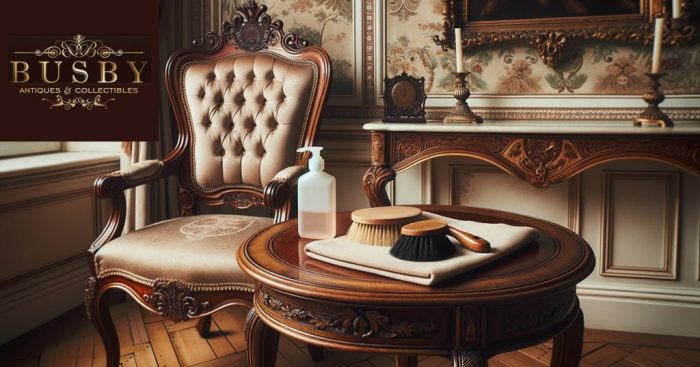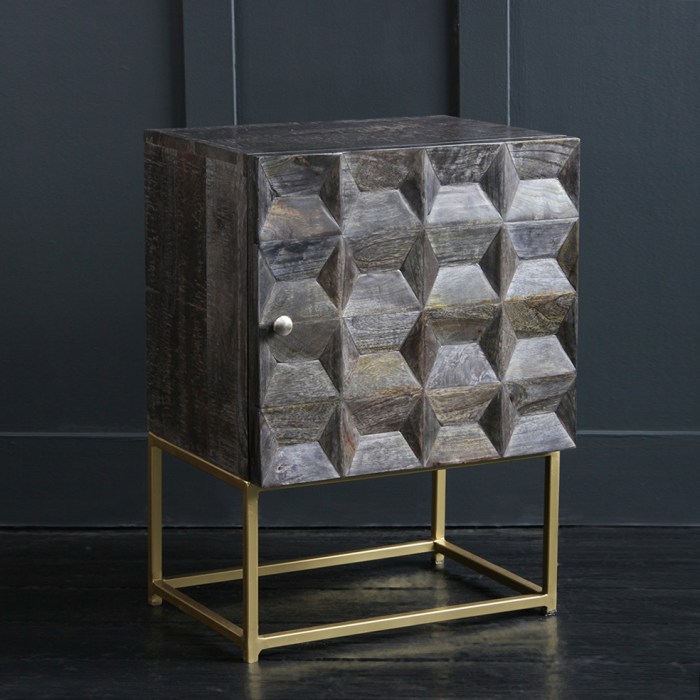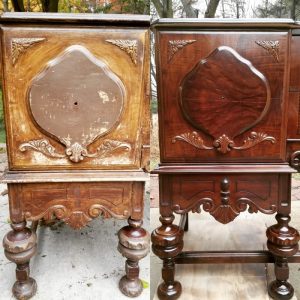
Unlocking the secrets to preserving your cherished vintage furniture requires understanding its unique materials and construction. From the delicate sheen of a lacquered finish to the intricate weave of antique upholstery, each piece tells a story. This guide delves into the art of caring for vintage furniture, providing practical advice on cleaning, repair, and preservation techniques that will ensure these timeless pieces remain beautiful for generations to come.
We’ll explore the nuances of different materials, styles, and the common challenges encountered in maintaining their pristine condition.
Proper care not only enhances the aesthetic appeal of your vintage furniture but also significantly impacts its value. Learning to identify and address minor damage promptly can prevent costly repairs down the line, safeguarding both the monetary and sentimental worth of your treasured possessions. This guide equips you with the knowledge and confidence to become a skilled steward of your vintage furniture legacy.
Identifying and Addressing Common Problems

Understanding common issues affecting vintage furniture is crucial for both preservation and restoration. Recognizing these problems early allows for timely intervention, preventing further damage and maintaining the piece’s value and aesthetic appeal. This section will highlight typical problems found in various vintage styles and offer practical solutions.
Loose Joints in Victorian Furniture
Victorian furniture, known for its intricate joinery and often substantial size, is susceptible to loose joints over time. Wood shrinkage due to changes in humidity and years of use are the primary culprits. The most common areas affected are chair legs, table supports, and drawer runners. Addressing loose joints often requires careful tightening or regluing. For minor loosening, tightening existing screws or adding wood glue to the joint, followed by clamping, may suffice.
More significant issues might necessitate the use of specialized wood glue designed for repairs, dowels, or even replacement parts. Assessing the severity of the loosening is crucial; a simple wobble may only require tightening, whereas a significant separation may need more extensive intervention. Always use appropriate clamps to ensure proper alignment and pressure during the repair process.
Faded Fabric on Art Deco Pieces
Art Deco furniture frequently features vibrant upholstery, often in silk, velvet, or other delicate fabrics. Years of exposure to sunlight and air can cause significant fading and discoloration. Unfortunately, restoring faded fabric to its original vibrancy is often impossible. However, cleaning the fabric carefully with a suitable upholstery cleaner can improve its appearance. For minor fading, professional cleaning may be the best option.
In cases of severe damage, reupholstering with a fabric that closely matches the original (or a complementary period-appropriate fabric) may be necessary. This requires careful consideration of the original fabric’s texture, pattern, and color palette to maintain the piece’s integrity. A skilled upholsterer can offer guidance on appropriate fabric choices and ensure a professional finish.
Assessing Furniture Condition Before Purchase
Before purchasing any vintage furniture, a thorough inspection is paramount. Begin by carefully examining the structural integrity: check for loose joints, wobbly legs, or damaged frames. Look for signs of woodworm infestation (small holes, sawdust), water damage (discoloration, warping), and cracks in the wood. Inspect the finish for scratches, chips, or areas of significant wear. With upholstered pieces, evaluate the fabric for stains, tears, fading, and overall condition.
Examine the cushioning for sagging or lumps. Pay close attention to any details specific to the furniture’s style – for example, the inlay work on a Queen Anne piece or the veneer on an Art Deco cabinet. If possible, have a knowledgeable expert examine the piece before committing to a purchase. Remember, restoration can be costly and time-consuming, so a thorough inspection can save you from unexpected expenses.
Vintage Furniture Styles and Their Characteristics

Understanding the style of your vintage furniture is crucial for appropriate care and restoration. Different styles utilize diverse materials and construction techniques, influencing how best to clean, repair, and preserve them. This section will explore several popular vintage styles, highlighting their key features.
Mid-Century Modern Furniture
Mid-Century Modern (MCM) furniture, generally spanning from the 1930s to the 1960s, emphasizes clean lines, organic forms, and functionality. Materials commonly include teak, walnut, and other hardwoods, often paired with molded plywood and upholstery in bold colors and geometric patterns. A defining characteristic is the use of tapered legs and simple, unadorned silhouettes.Imagine a low-slung armchair with a gently curved back, supported by four slender, tapered legs of dark walnut.
The upholstery is a vibrant turquoise, showcasing a geometric pattern. This simple yet elegant design exemplifies the essence of MCM.
Victorian Furniture
Victorian furniture, prevalent during Queen Victoria’s reign (1837-1901), is characterized by its ornate detailing, rich materials, and opulent aesthetic. Dark, richly stained woods like mahogany and rosewood are prevalent. Intricate carvings, plush upholstery, and decorative elements like brass inlays and marble tops are common features. Pieces often display a sense of weight and grandeur.Picture a massive, ornately carved mahogany wardrobe.
Its surface is densely covered with intricate floral carvings, and the hardware consists of polished brass knobs and handles. The overall effect is one of impressive scale and elaborate detail.
Art Deco Furniture
Art Deco furniture, popular in the 1920s and 1930s, is defined by its geometric shapes, streamlined forms, and luxurious materials. Common materials include chrome, lacquer, and exotic woods like ebony and Macassar. Bold colors, rich textures, and the use of contrasting materials are key elements. The style often incorporates geometric patterns and stylized representations of nature.Envision a sleek, low-profile sideboard with a mirrored surface.
The cabinet is constructed from dark ebony wood, accented with chrome details. Geometric patterns are subtly inlaid into the wood, and the overall effect is one of sophisticated elegance and modernism.
Resources for Vintage Furniture Restoration
Embarking on a vintage furniture restoration project requires access to the right resources. Finding quality parts, appropriate tools, and reliable expertise can significantly impact the success and longevity of your restoration efforts. This section Artikels key resources to help you navigate this process effectively.
Sourcing Parts, Tools, and Supplies
Securing the necessary components for a successful restoration is crucial. A multifaceted approach often yields the best results. Antique shops, flea markets, and online auction sites frequently offer a treasure trove of vintage hardware, replacement wood, and upholstery fabrics. However, it’s important to carefully inspect any potential purchases for condition and compatibility. Specialty woodworking stores carry a wider range of tools and supplies, such as wood fillers, stains, and finishes, specifically formulated for antique restoration.
Online retailers also offer a broad selection of restoration supplies, but careful comparison-shopping is recommended to ensure quality and fair pricing. Remember to always prioritize sourcing materials that are compatible with the age and style of your piece to maintain its historical integrity.
Finding Professional Restoration Services
While many restoration tasks can be tackled by enthusiastic DIYers, some projects require the expertise of professional restorers. Locating skilled professionals can be achieved through several avenues. Local antique dealers often have established relationships with reputable restorers and can provide recommendations. Online searches, using s like “vintage furniture restoration [your location],” can also uncover local businesses. Professional organizations, such as the American Institute of Conservators, may maintain directories of qualified professionals.
When selecting a professional, it’s crucial to review their portfolio, request references, and obtain a detailed estimate outlining the scope of work and associated costs.
Relevant Books, Websites, and Online Communities
A wealth of information is available to support your restoration efforts. Numerous books dedicated to furniture restoration offer detailed instructions and techniques. These books often cover various aspects, from basic repairs to advanced refinishing methods. Websites dedicated to woodworking, antiques, and furniture restoration provide valuable articles, tutorials, and forums. Online communities, such as specialized forums or social media groups, offer opportunities to connect with other enthusiasts, share experiences, and seek advice from experienced restorers.
These resources provide a supportive network and valuable insights into tackling specific challenges. For example, a website dedicated to antique furniture might feature a detailed guide on French polishing techniques, while a forum could offer a discussion on identifying the origin of a specific type of wood veneer.
Preserving vintage furniture is more than just cleaning and polishing; it’s about understanding the history and craftsmanship embedded within each piece. By applying the techniques and insights shared in this guide, you can ensure your vintage furniture not only survives but thrives, becoming cherished heirlooms passed down through the years. Remember, attentive care translates to lasting beauty and enduring value, preserving a tangible link to the past for future generations to appreciate.
Expert Answers
What’s the best way to prevent scratches on my vintage wooden furniture?
Use coasters under drinks, felt pads under furniture legs, and avoid dragging objects across surfaces. Consider using protective furniture covers when not in use.
How often should I clean my vintage furniture?
Dust regularly with a soft cloth. Deep cleaning should be done less frequently, depending on the material and finish, but at least once or twice a year.
Can I use commercial furniture polish on all types of vintage furniture?
No, always check the type of finish (lacquer, varnish, shellac, etc.) before applying any polish. Some polishes can damage certain finishes. Test in an inconspicuous area first.
Where can I find replacement parts for my vintage furniture?
Antique shops, online marketplaces (like eBay), and specialized vintage furniture restoration suppliers are good places to start.







